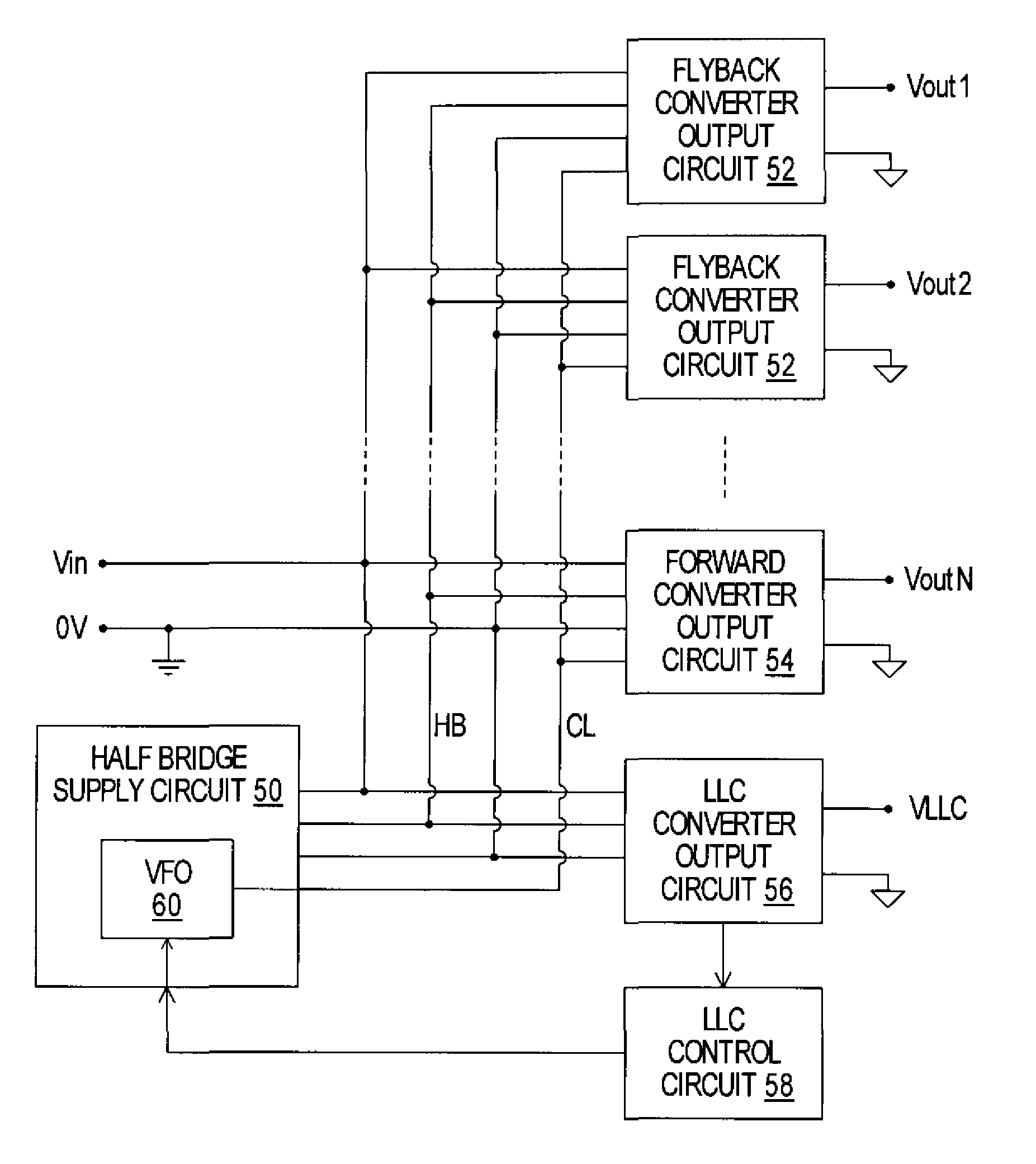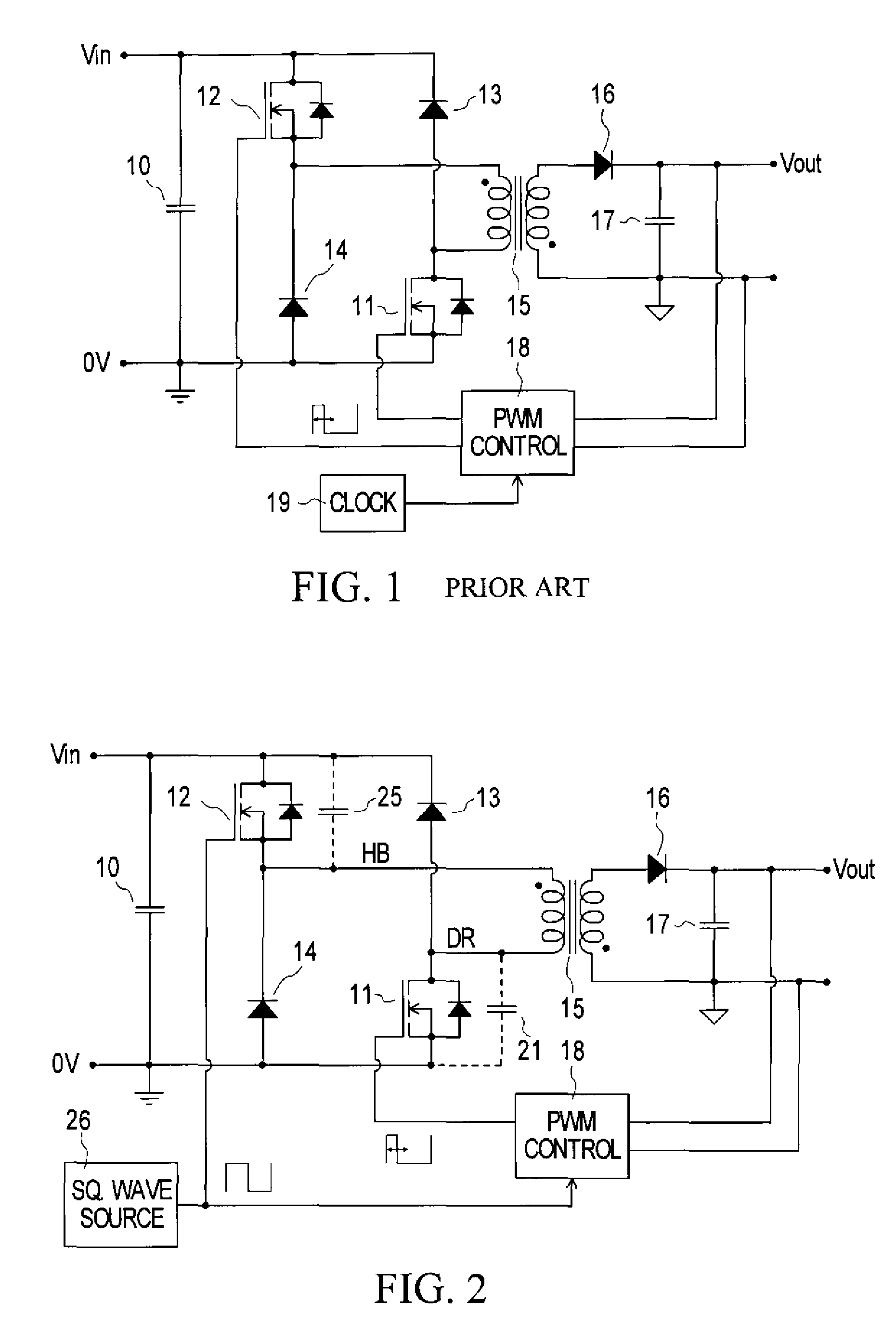DC converters with constant and variable duty ratio switching
a technology of constant and variable duty ratio and converter, which is applied in the direction of dc-dc conversion, power conversion systems, instruments, etc., can solve the problems of unable to facilitate the provision of so-called soft or resonant switching of switches, and the disadvantage of such dc converters, so as to facilitate soft switching of the first and third switches
- Summary
- Abstract
- Description
- Claims
- Application Information
AI Technical Summary
Benefits of technology
Problems solved by technology
Method used
Image
Examples
Embodiment Construction
[0030]FIG. 1 schematically illustrates a known form of flyback converter having a half-bridge or two-transistor primary switching arrangement. A forward converter can have a similar primary switching arrangement, differing in its configuration on the secondary side of the transformer, as is well known.
[0031]In the flyback converter of FIG. 1, an input voltage source Vin, relative to a zero voltage 0V or ground reference, smoothed by an input capacitor 10, is switched by a half-bridge primary switching arrangement of two MOSFETs 11, 12 and two diodes 13, 14 to a primary winding of a flyback transformer 15, a secondary winding of which is coupled via a diode 16 to an output capacitor 17 to produce an output voltage Vout. Dots adjacent the transformer windings indicate the winding senses or polarities in conventional manner. A PWM (pulse width modulation) control unit 18, supplied with a clock signal at a desired switching frequency of the converter from a clock source 19, is supplied ...
PUM
 Login to View More
Login to View More Abstract
Description
Claims
Application Information
 Login to View More
Login to View More - R&D
- Intellectual Property
- Life Sciences
- Materials
- Tech Scout
- Unparalleled Data Quality
- Higher Quality Content
- 60% Fewer Hallucinations
Browse by: Latest US Patents, China's latest patents, Technical Efficacy Thesaurus, Application Domain, Technology Topic, Popular Technical Reports.
© 2025 PatSnap. All rights reserved.Legal|Privacy policy|Modern Slavery Act Transparency Statement|Sitemap|About US| Contact US: help@patsnap.com



